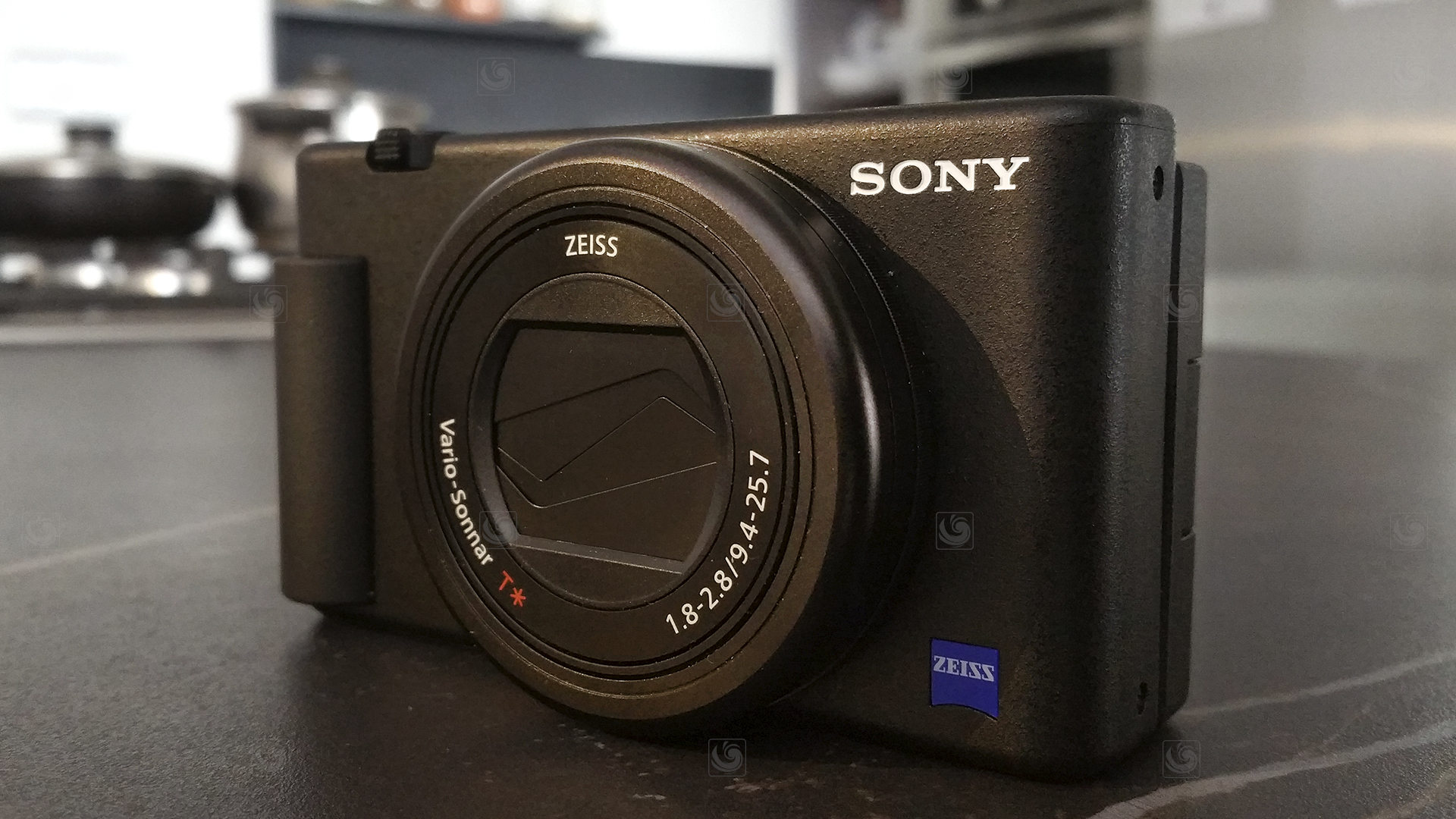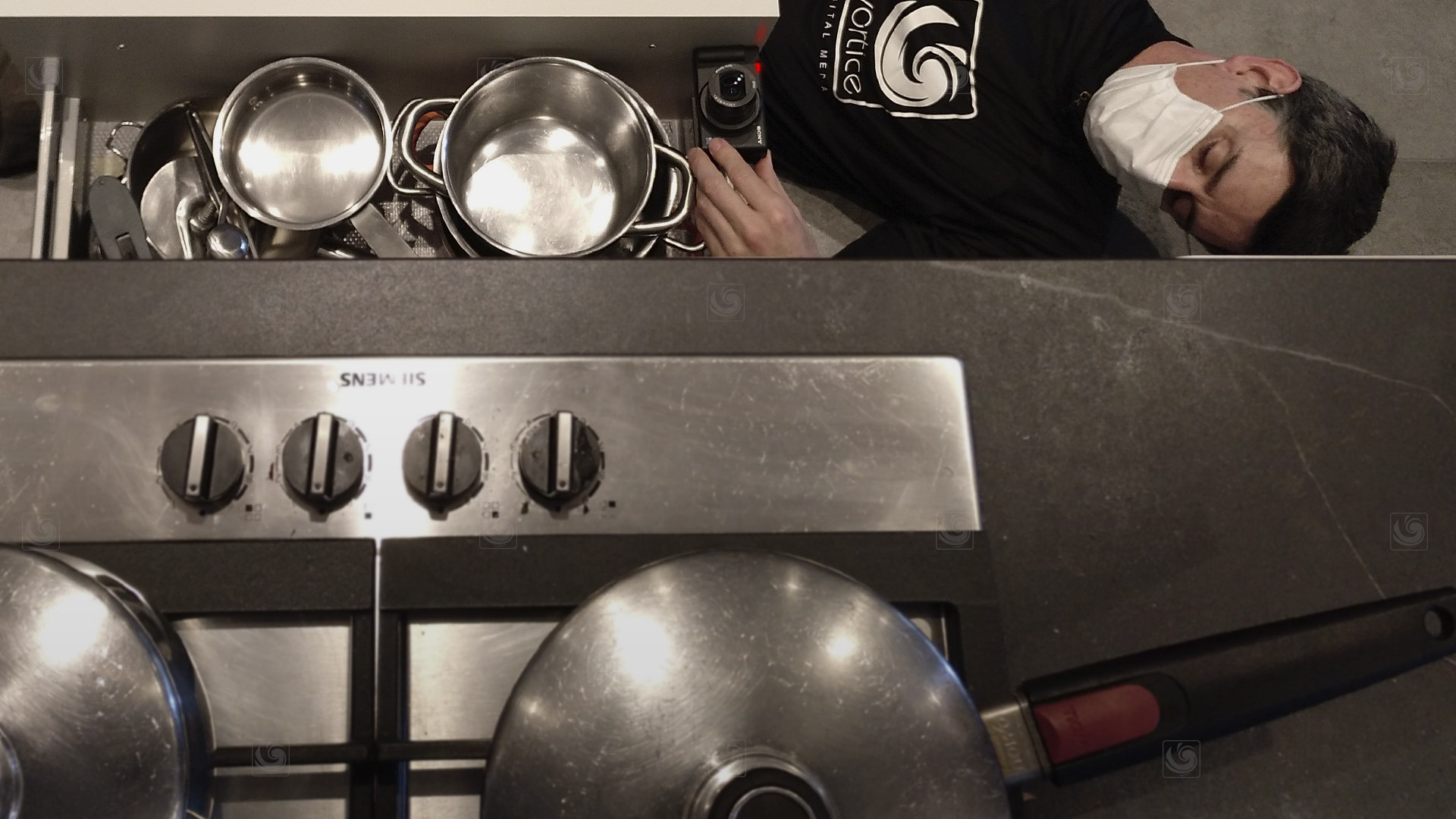Prosumer videocameras for Social Media
By VÓRTICE
2021-03-18
All that you expected to be better than what you've finally found
In this blog post we will compare, without going into excessive technicalities and in an eminently practical way, the experience in the use of a compact camcorder, intended for the "prosumer" user, with the results obtained using professional cameras.
Es algo sobre lo que ciertamente veníamos queriendo escribir desde hace tiempo atrás y que finalmente, Macrobioteca, formadores en técnicas de cocina macrobioticas, nos ha puesto en bandeja de la mano de un proyecto personal de vídeos para RRSSIt is something that we have certainly been wanting to write about for some time and finally, Macrobioteca, trainers in macrobiotic cooking techniques, has given us a personal video project for Social Media.
Sony ZV1, as a benchmark for compact cameras
The Sony ZV1 is an advanced compact camera that weighs just 300 grams and is the size of a box of jelly beans, its zoom lens is very bright and it has a one-inch sensor that allows it to take 20.1MB pictures.
This type of camera is small, has a built-in stabilizer, bright lens, intelligent and ultra-fast focus, but this model also has a fully tilting screen, three-capsule directional microphone, recording warning lamp, ND filter, mini-jack input, 125-12,800 ISO for video, and of course is capable of recording in 4K at 30fps.


Motion Stabilizer
Professional equipment is often defined not only by the recording formats it allows, but also by the ergonomics of its design, ease of setup and use in stressful or adverse conditions.
Thus, at the professional level, the stabilization of free camera movements is achieved by electro-mechanical means, such as cranes, sliders, travellings or, more recently, thanks to the use of a gimball.
This type of apparatus counteracts the sudden movements that the camera receives, making micro-corrections in real time through its articulated arms, controlled by servomotors.
In this way we achieve smooth and controlled movements at the maximum resolution required by the project.

In the case of the ZV1, although its ergonomics is still that of a "box", its light weight makes it comfortable to hold in your hands and make free movements, activating the image stabilization mode so that the recording is not too "shaky".
As in the case of smartphones, the software stabilization of prosumer cameras works wonders but not miracles. The image recorded by the sensor is scaled and deformed to achieve the sensation of fluidity, and "jittering" artifacts are generated in certain types of jumps between frames, preventing smooth transitions.
In such cases, the decrease in image quality is appreciable.
Autofocus
Another highlight of the prosumer compact camera models is the autofocus.
In the case of the ZV1, it can focus from 30cm to infinity in 0.03 seconds! Undoubtedly, being able to operate the camera without having to worry about focusing is very convenient for "man/woman orchestra" type creators, but the truth is that the intelligent autofocus system will often encounter dilemmas about the point of interest, producing rapid shifts in focus, and although it is true that the camera has a manual focus option by software, it is totally inoperative for recording with ease. Translated with www.DeepL.com/Translator (free version)
On a professional level, lack of focus control is unacceptable. In our productions we use manual focus tracking, since, in addition to its attractive aesthetics, it is another narrative tool, helping us to direct the viewer's point of attention.
Fixed Lenses
The zoom lens mounted on the Sony ZV1 is a 24-70mm, which provides a very versatile and bright angle of view, with maximum apertures of F1.8 (G) - 2.8 (T).
To achieve the attractive shallow depth-of-field effects, the camera maintains maximum apertures in automatic mode and plays with the combination of shutter speed and ISO.
This automatic combination of parameters can generate noise in the images and filming effects on fast camera movements, characters and objects.
On the other hand, the 24mm wide-angle produces a certain barrel effect deformation, clearly noticeable in subjects placed close to the camera.
At the professional level we use interchangeable lenses, both prime and zoom, so that we can choose those with the right brightness for each scene, according to the specifications of the director of photography.
The quality of lens construction and size is always much higher than in any compact camera, as is the larger sensor size in professional cameras, which provides superior definition without chromatic aberrations, more organic image texture, minimized perspective distortion, shallow depth of field, and the ability to add filters to achieve certain effects.
Recording Quality
The image recording quality of the Sony ZV1 is quite remarkable, although in our opinion it tends to overexpose, saturates slightly and the images suffer from an unnatural texture.
Es capaz de grabar en formatos logarítmicos con resolución 4K y hasta 30fps, pero el problema con las cámaras compactas es que lo hacen en archivos comprimidos aptos para difusión, y no tanto para ser post-producidos, con lo que al editar y masterizar degradaremos ya de manera apreciable el metraje ya de por si (excesivamente) comprimido por la cámara.
It is capable of recording in logarithmic formats with 4K resolution and up to 30fps, but the problem with compact cameras is that they do it in compressed files suitable for broadcasting, and not so much for post-production, so when editing and mastering we will degrade the footage already (excessively) compressed by the camera.
They can record in professional formats with low compression and also in RAW files, which contain the complete information recorded by the sensor, allowing full control over the image in post-processing and mastering, without loss of quality.
The test
For the final result of the video to be as similar as possible to the rest of the VÓRTICE productions and to have maximum control over the Sony ZV1, we left it configured in full manual mode. Doing so revealed that, although the options in the menus are very complete, the navigation through its dozens of screens a fast recording behaves cumbersome.
The internal battery allowed us to keep the camera on for 45 minutes, during which time we were able to appreciate its increasing warm-up, but without failures in operation or recording.
It should be remarked here that, professionally, high-performance external batteries are often used, which allow the camera to be operated for hours without shutting down. In addition, professional cameras are self-ventilated, robust, ergonomic and watertight for long periods of time.

Conclusions
We will not comment here on the virtues of the Sony ZV1 compact camera in audio recording, since in our way of working audio is always recorded by means of dedicated devices, and we will not analyze its capacity as a still camera either.
The challenge of shooting with a compact camera and getting a professional look has been fun, but not as agile as we first thought.
This type of compact cameras seem to us great for Youtubers or similar, who have to take care of all the production themselves. The ratio between features and price is excellent, and although its operation in manual mode is complex, it is very simple in automatic mode, where standard results will be achieved.
The image quality is correct, although logically it does not reach the performance and quality of professional cameras and equipment.
In any case, beyond technology, in our opinion, criteria and creativity still prevail when recording each shot, arranging them in an orderly fashion to create the narration of a story in a personal, exciting and effective way.